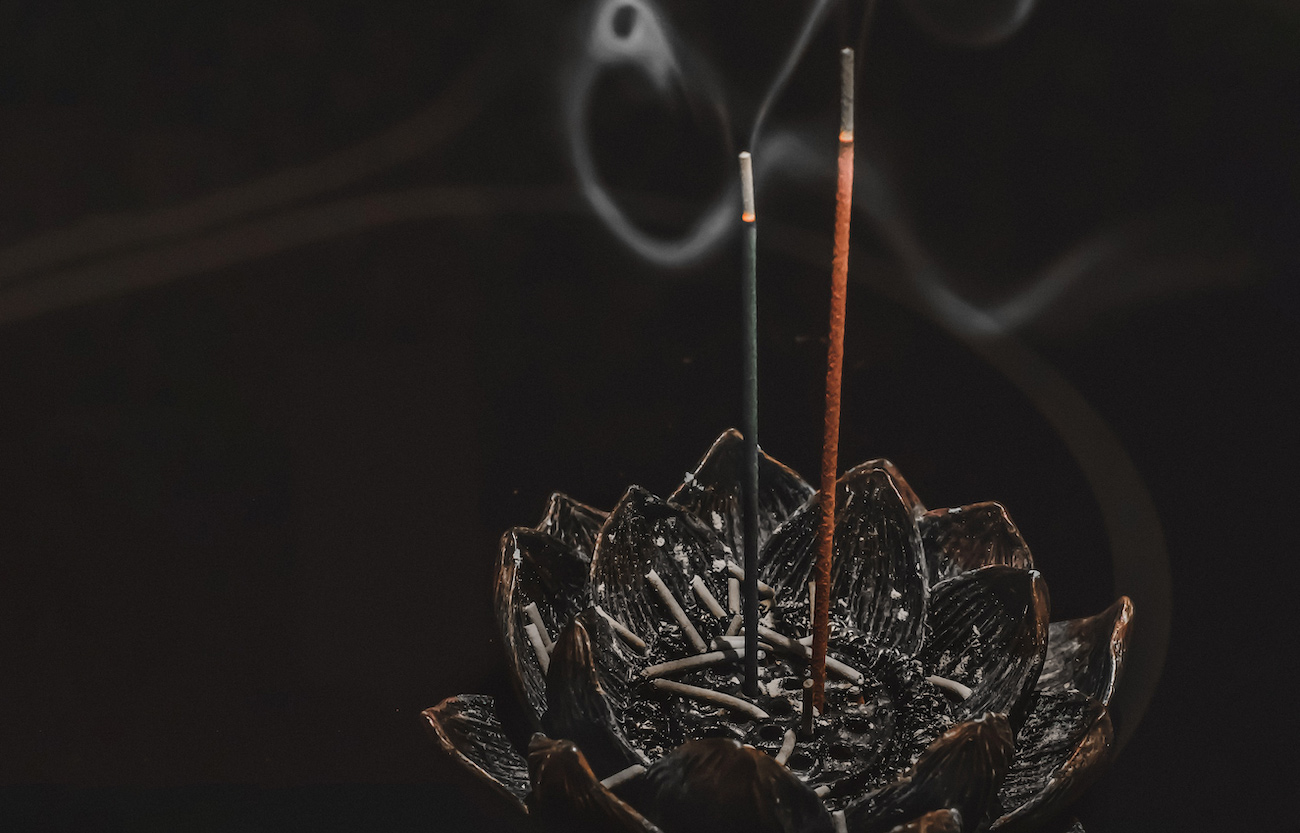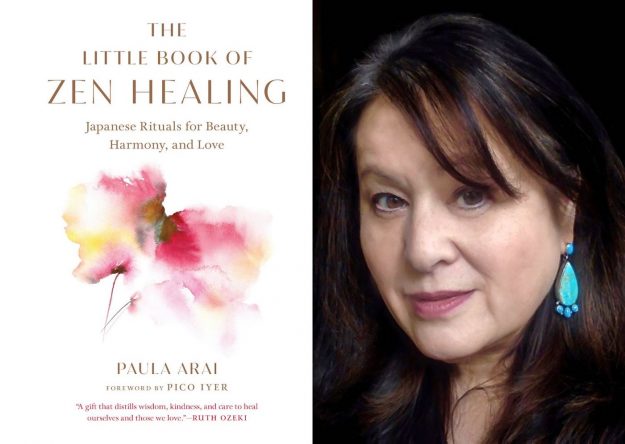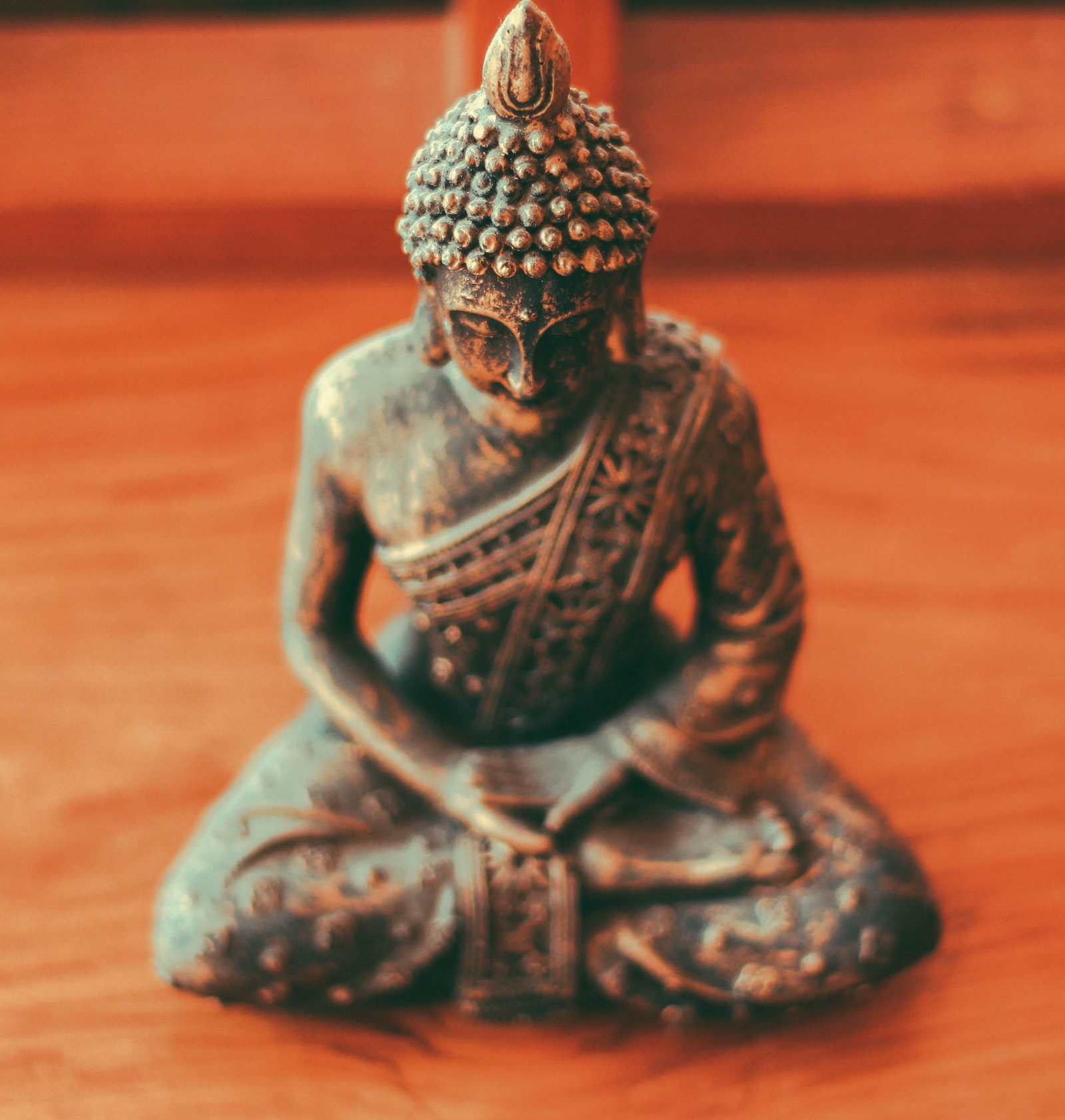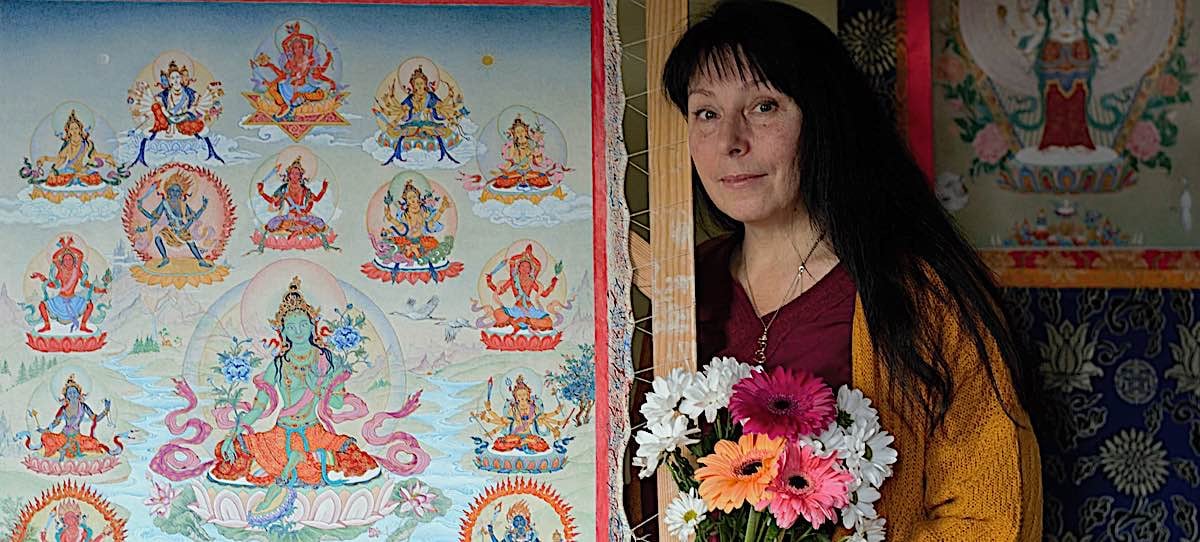Where Fear and Love Meet
How healing rituals can help us navigate the unpredictability of grief The post Where Fear and Love Meet appeared first on Tricycle: The Buddhist Review.

That cold, gray afternoon in Nashville, after months of listening to the whir of the oxygen machine that provided continual relief to my mother, a vacuum of silence filled her bedroom. Even though I had known she would die soon, when I stood at the threshold of life and death, I felt like one wrong move would send us off into an abyss of despair. Indeed, the last several months had been one long fear of wrong moves: too much morphine or not enough, too much talking or not enough, not enough water or too much. But this time no hospice nurse or doctor could advise.
Suddenly all the palliatives that had been the source of comfort seemed harshly out of place. Hands shaking in disbelief, I cleared the bedside table of the vials of aquamarine liquid morphine, the anti-nausea salve that was applied behind the ear, and the pink star-shaped sponges for removing sticky mucus from the tongue. Then the ultimacy of the moment crashed upon me. How do I assure her safe passage through this perilous transition?
Kito Sensei had said to call her. The elderly Zen nun had helped my mother and me over the last nine years, freely applying her healing balm of compassion. Thank goodness it was the middle of the night in Japan. Although she devotes long days to ministering to others, at 3:45 a.m. she would be at her old wooden temple where she nurtures the Bodhi tree seeds she brought back from India. The cordless phone in my hand was a lifeline. I knew in my head that Zen rituals recognize the deceased as a buddha, but it was Kito Sensei, in her unheated worship hall ten thousand miles away, who guided me through those terrifying, disorienting moments.
Trusting her to know what to do, I followed her instructions on performing the ritual of safely sending off a person on their journey of death. Rushing about, frantic to treat our new buddha properly, I found the bronze plum-blossom incense burner, sandalwood incense sticks reserved for reverencing buddhas, white candle, and plain carved-wood figure of Kannon, the goddess of compassion, adding some white chrysanthemums I had kept on hand sensing they would soon be needed. The bedside table was transformed into a mortuary altar. It had not been more than ten minutes since my mother breathed her last. As I offered a stick of incense in honor of her, I saw that her face had relaxed into the peaceful smile that I have seen so often in images of buddhas. Our relationship was transforming before my very eyes. “Are you my mother?”
When I placed the incense into the burner, I became one with all who had done so before. In the moment that had threatened to be the loneliest in my life, I experienced instead a profound connection with all grievers from the distant past and deep future. I was not alone. I was held by everyone who has lost a loved one. Kito Sensei had guided us safely through this critical transition with a wisdom that transcended barriers of space, time, life, and death. At that moment my understanding of ritual’s power to heal became a visceral reality.
***
Immersions into the heart of grief are the raw moments in which healing activities thrive. Healing mobilizes our deepest despair and highest values. Healing occurs in the space where fear and love meet.
In the moment that had threatened to be the loneliest in my life, I experienced instead a profound connection with all grievers from the distant past and deep future.
Grieving consumes immense energy. It moves through varied rhythms and appears in sundry emotional shades, from despair to grace. Grief does not follow a straight path—instead, it circles back, lies dormant, bursts out unexpectedly. It holds you down, stirs up old wounds, breaks through walls of anger, and releases anguish. Though grief is undulating and ever-shifting, grievers share in the painful reality of losing something or someone. All losses demand adjustment. Whether the loss is of a job, mobility, confidence, health, a home, or a person who has died, grieving is about transformation. It revolves around integration and deepening acceptance. All seasons of grief involve changes and choices. Some seasons are intense and cacophonous, others subtle and quiet. Grief never completely ends, though it usually relinquishes its tight grip on you as you forge new ways to interact with the present.
When caring for someone in grief, including yourself, open the senses of your heart. Notice how the light that streams in from the cosmos shines through your eyes, warms your voice, and glows through your movements. Observe how muscles and bones provide structural support, however minimal or robust. Breathe in gratitude before talking. Breathe out lovingkindness while listening. Breathe in the beauty of the web of interconnections. Breathe out peaceful joy. Grieve one breath at a time.
***
There is an ancient Japanese Buddhist death ritual that encodes profound healing wisdom in the way it lovingly guides you in your passage into death, echoing the passage of birth. While you were in the womb, an umbilical cord provided nourishment from your mother’s body, which in turn was nourished by her mother, who was in turn nourished by her mother, and so on. The umbilical cord tethered you to millions of years’ worth of organic growth and decay, and to the source of life. You were not alone in the womb.
Death, however, can be a lonely passage, for the radical change unmoors you from the familiar. The Japanese dying ritual begins with placing ribbons in the hands of the person lying on their deathbed. The other ends of the ribbons are secured to an image of Amida Buddha, “the Buddha of Infinite Light and Life.” The ritual enacts the teaching that Amida is to usher you to rebirth in the Pure Land, a womb that offers all you need to attain enlightenment. The ribbons function like an umbilical cord, a conduit to the source of infinite life.
Though I can only surmise the comfort a person feels while dying in this ritualized way, I have already prepared some ribbons and left instructions with my son to place by my deathbed the Goddess of Compassion we got when he was an adolescent. Of course, the conditions of my death are not known, but even just having a vision of how the transition might be ritualized provides some solace. My son, too, will not have to wonder what to do when the time comes. It’s not that I believe I will be reborn in a Pure Land, but I already know that tangibly doing something to remind myself that I am not alone increases the odds of a more peaceful crossing. I will be encouraged to remember that I am supported by a vast network of interdependent activity. An Amida Buddha or Kannon would not make cultural sense for everyone, but it is easy to imagine that someone’s ribbons could be tied to a rock gathered on a favorite hike, an abalone shell, a tree out the window, a statue of the Virgin Mary or Jesus, a sacred text, a hawk feather, or anything imbued with meaning for them.
***
To witness a loved one crossing the threshold of life is momentous. It often catapults a person into a piercing season of grief. Each person grieves in a way that expresses their unique relationship with the deceased and the conditions of their life. As the waves of grief tumble in, sometimes knocking one off balance, many find that having a place to sit still with a picture, a lock of hair, or an item they held precious can help them face the radical transformation. A home altar can be such a designated place where those grieving can integrate loss into the rhythms of daily life. Saying good morning, good night, or anything that needs expression—anger and/or gratitude, asking for and/or offering forgiveness—to the deceased is not necessarily attachment or delusion. It can be done as an act of love.
A home altar can also help the grieving foster a relationship between a child and elders with whom they may never have lived—a conduit to receive their wisdom, support, and love. In this way, the deceased can provide a buffer to challenges and amplify joys. Or in the case of someone who lives alone—perhaps having lost family members through death or dysfunction—meaningful rituals of interaction at a home altar can dramatically reduce loneliness and depression. I once met a woman named Honda-san when I was on a pilgrimage in Japan, and she told me that she calls out “Tadaima, I’m home” each time she returns to her place. Though she feels the support that comes with engaging in home altar rituals for her parents, she holds that “the real memorial ritual is to live well,” and she often asks herself, “Are you living in a way that it is OK to die any time?”
A mourning heart is tender. When we’re in a mode of heightened sensitivity, even subtle things can be vividly sensed, whether painful or pleasant. Gently opening the senses of the mourning heart can present beauty to our wounds. Your heart can start seeing the seeds planted by those who have passed on, continuing their vital energy in new ways. If you listen carefully, the music they made with their life echoes in the wind and wafts on the waves of a bird’s song. In the autumn you can share the taste of harvest bounties; in summer, sweet berries. A porous heart can smell the fragrance of their life qualities lingering. Sensing how death is woven into the fabric of life can ease facing your own demise. Upon death, all of us will transform in ways that offer supportive energy. Grief helps your bones feel the deeper beauty that undergirds life.
Tears rain on the parched heart, quietly preparing it to stir with fresh life. The fog that leaves you lost and struggling to feel meaning and purpose seeps into the shredded fabric of life, delicately mending the threads. Eventually we may find a newly embroidered tapestry, stronger in precisely the places that had frayed. As loss is integrated into a different season of life, it transforms into nourishment that feeds the heart from deeper sources of wisdom and understanding. Grief is a catalyst for healing. Healing grief carves the landscape of your heart in ways that open up deeper pathways of connection to others.
⧫

From The Little Book of Zen Healing: Japanese Rituals for Beauty, Harmony, and Love © 2023 by Paula Arai. Reprinted in arrangement with Shambhala Publications, Inc. Boulder, CO.

 Lynk
Lynk 






























